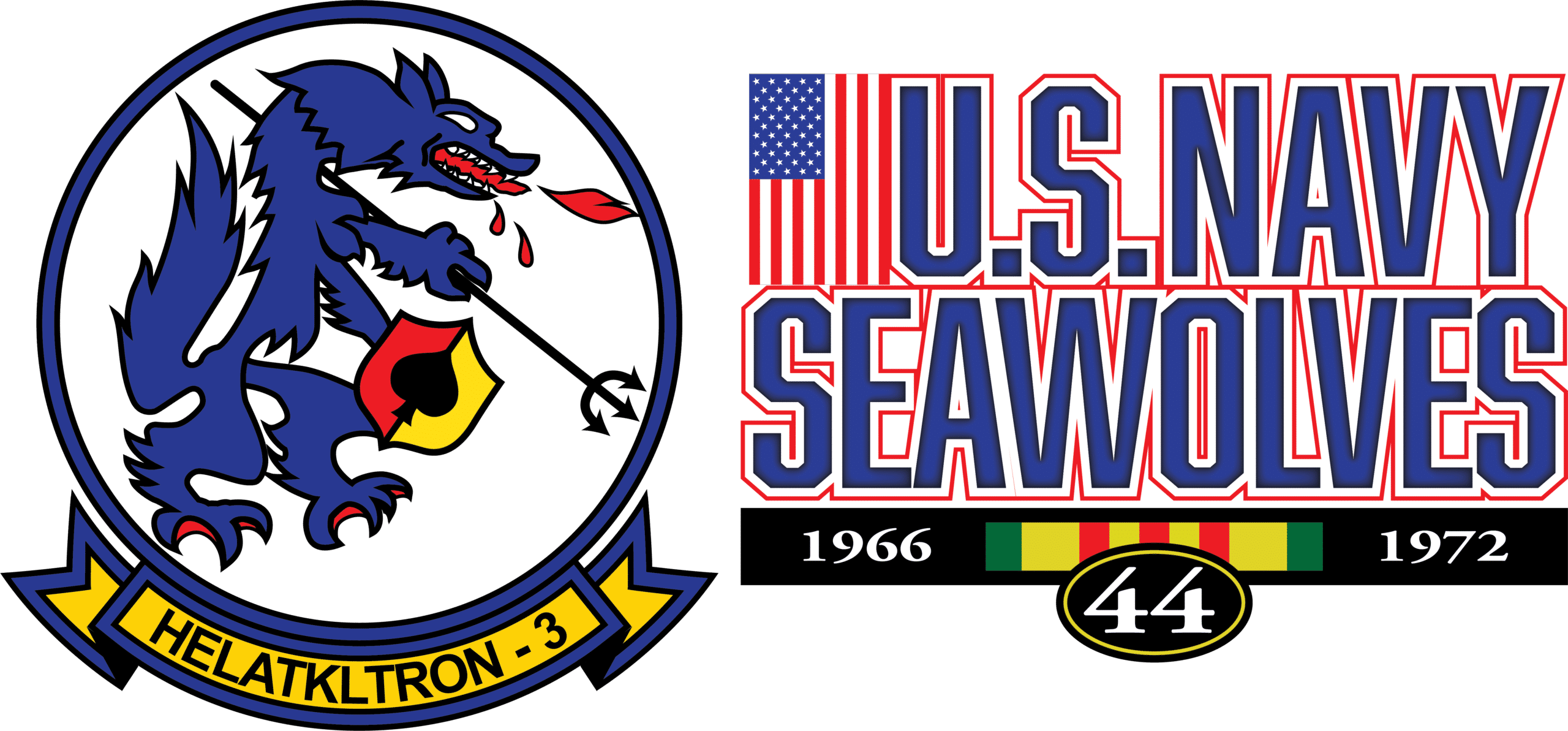Seawolf Maintenance Personnel Responsibility
From: W.W. Bill Pressey Lt USN 67720
To: Whom it may concern
Subject: Maintenance Personnel Responsibility’s for HAL-3 at Binh Thuy, RVN
It has come to my attention after having numerous conversations with Squadron personnel that there are numerous omissions of injury’s received while flying the hazardous missions, that the squadron flew in Vietnam during the period of 1966-1973 when it was decommissioned. It should be noted that HAL-3 was the most heavily decorated Navy Squadron in the history of Naval Aviation. Each aircrew men flew an average of 300 missions or more flying in a environment no higher than 1500 feet, and always subject to small arms fire.
The crews flew in aircraft that were lightly armed and wore minimum protection from enemy fire. The missions were almost always fire missions that were directed at an entrenched enemy that was firing at PBR’s or SEAL Detachments that were extracting from an enemy controlled area. The aircraft were armed with either four M-60 machine guns or mini guns plus 14 high explosive rockets, and each crewmen had a hand held M-60 machine gun, was a very intense volumn of fire, which made for a lot of noise along with the jet engine noise form the rotor.
Air crew gunners wore a chest plate and were held in the aircraft by a 6 foot monkey tail that offered no restraint and was only attached to their waist. In case of a autorotation or crash the crewmen are thrown out of the aircraft and subject to severe back and neck injuries. Several of our crewmen were trapped under the aircraft and badly burned or drown in rice paddy’s. Medical attention in almost all cases was nonexistent on the scene of an injury and crewmen had to be flown to an Army unit for care. In most cases, it was a corpsman that wasn’t qualified to judge the extent of the injury, and didn’t have access to the crewman’s medical file, which was held at squadron headquarters. They were usually sent back to the detachment and back to combat that day or the next. No X-rays or a complete evaluation by a doctor. If you read the accompanying evaluation of back injuries for helicopter crewmen done by two naval flight surgeons, you will see what helicopter aviation does to one’s back over time. This information should certainly be taken into consideration when reviewing back problems associated with helicopter flying.
Finally, all of the squadron’s detachments were located in small hamlets or barges with minimum security and under fire constantly and in areas treated with Agent Orange. Each crewman should be evaluated for PTSD, exposure to Agent Orange, back injurys, hearing loss, and wounds. Additionally as you know Agent Orange leads to other types of medical problems, not the least of which is type II diabetes, skin and prostate cancers, and alzheimer’s. Your attention to these comments is greatly appreciated.
Respectfully,
W.W. Pressey
SEAWOLF ASSOCIATION
Bill Pressey *** President
18350 SW Florendo Lane
Beaverton, OR 97007-9057
(503) 259-2472
pressey@aol.com
